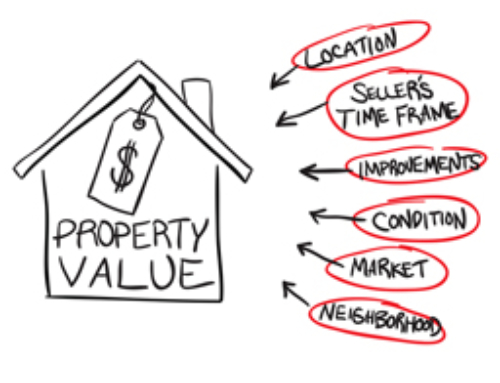 Congress Doubles Funding for Troubled USDA Housing Loans
Congress Doubles Funding for Troubled USDA Housing Loans
Steve Cook, Real Estate Economy Watch
While slashing funds for disability, elderly, and Native American housing programs, Congress has doubled the funding for a USDA housing program that may cost the government $4 billion in defaulting loans. Why? Because over a third of the government-guaranteed rural home loans in its portfolio may be ineligible for the program.
On April 15, the president signed into law the continuing resolution to fund the government that, despite concern over the deficit, includes increased funding for the USDA’s Rural Housing Service’s Section 502 single-family guaranteed loan program. The funding increases from $12 to $24 billion annually for the current year as well as the next federal fiscal year.
In January, an inspector general’s report discovered that the government may have given out more than $4 billion in stimulus housing loans to ineligible borrowers. An inspector general’s audit found that among one hundred randomly selected government-guaranteed rural home loans across the country, twenty-eight lenders had not fully complied with federal regulations in determining borrower eligibility.
The audit report found borrowers with an annual income over the program’s limits, borrowers with questionable ability to repay the loan, borrowers who didn’t need the government loan guarantee, and borrowers who purchased homes with swimming pools, which is strictly prohibited by the program’s rules. Some borrowers had debt-to-income ratios that were too high because lenders accepted unstable or inconsistent earnings or used only recent earnings. Several borrowers were, or had been, delinquent on their loans. One was over 180 days delinquent. Another had defaulted, and the lender had filed a loss claim.
USDA officials agreed that ten of the twenty-eight borrowers were ineligible.
Although the auditors looked only at a tiny sample of the 133,053 loan guarantees made in 2009, they estimated that tens of thousands might have been done improperly and warned that a wave of defaults might be looming.
Analysts said the problems echoed those exposed earlier in the mortgage crisis, with banks seemingly eager to collect fees for loans in which they retained little or no risk. The findings of the audit have raised concerns that the program, which features 90 percent government guarantees, could lead to widespread defaults.
“In a couple years, when these loans are going bad, everybody’s going to say, ‘Oh me, oh my, how did this happen?’” Christopher Whalen, managing director of Institutional Risk Analytics, a bank rating and consulting firm, told the New York Times. “There’s no surprises here.”
Founded in 1949 to spur home sales and development in rural areas, the U.S. Department of Agriculture is today one of the few places in America where you can get a mortgage with no money down at competitive rates.
Borrowers don’t have to be lower income; in fact, they can make slightly more than the median. Nor do they have to buy in a rural area. They can live relatively close to a major urban area—in places like Loudoun County, Va.; Half Moon Bay, Calif.; or parts of Westchester County, N.Y.—or in a popular resort community, such as Naples, Fla.; Aspen or Vail, Colo.; or Cape Cod, Mass. To qualify for a government-guaranteed loan, borrowers can earn up to 115 percent of the median income for the area.
In recent years, Congress has rushed through legislation to increase funding for the program when it has run out of money partway through the year. The value of USDA-backed loans has soared, from $3.7 billion in 2007 to about $16.8 billion in 2010.
With strong support among both housing and farm state interests, the 100 percent increase in the troubled USDA program sailed through untouched, even as other housing programs—including support for low-income, disabled, and elderly renters and grants for Native American housing, homeless assistance, and public housing—were cut in the final congressional negotiations. Funding for a companion direct loan program, limited to lower-income home buyers, was not increased.
READ MORE:
9 Things You Should Do to Get the Mortgage of Your Dreams
Spring 2011 Housing Market Prediction
Home-Selling Nightmare Never-Ending for Some Homeowners
Underwater with your mortgage? You’re not alone
2011 Outlook for Home Sellers
Steve Cook is Executive Vice President of Reecon Advisors and covers government and industry news for the Reecon Advisory Report.
During his 30 year career in public relations and journalism, Cook has been a print and broadcast news correspondent, served two Members of Congress as press secretary, was a senior executive in the world’s largest independent public relations firm in Washington and Chicago and was vice president of public affairs for the National Association of Realtors from 1999 to 2007.At NAR, Cook supervised external communications including news and editorial coverage, video production, speech writing and communications strategic planning. He helped to manage NAR’s multimillion dollar network advertising program.
Cook is a member of the National Press Club, the Public Relations Society of America and the National Association of Real Estate Editors, where he served as second vice president. Twice he has been named one of the 100 most influential people in real estate. He is a graduate of the University of Chicago, where he was editor of the student newspaper. In addition to serving as managing editor of the Report, Cook provides public relations consulting services to real estate and financial services companies, and trade associations, including some of the leading companies in online residential real estate.






